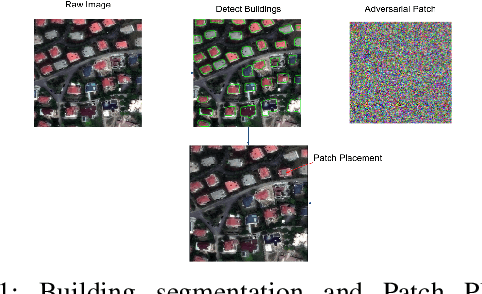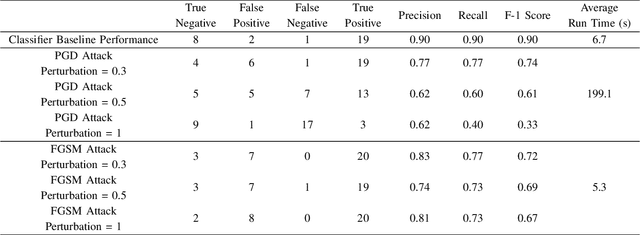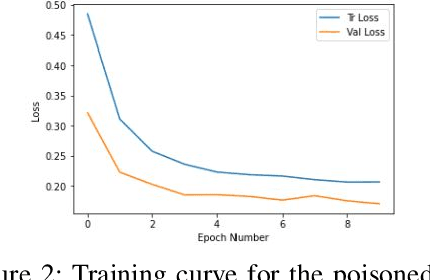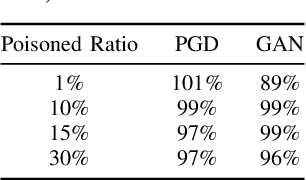Aayush Dhakal
Global and Local Entailment Learning for Natural World Imagery
Jun 26, 2025Abstract:Learning the hierarchical structure of data in vision-language models is a significant challenge. Previous works have attempted to address this challenge by employing entailment learning. However, these approaches fail to model the transitive nature of entailment explicitly, which establishes the relationship between order and semantics within a representation space. In this work, we introduce Radial Cross-Modal Embeddings (RCME), a framework that enables the explicit modeling of transitivity-enforced entailment. Our proposed framework optimizes for the partial order of concepts within vision-language models. By leveraging our framework, we develop a hierarchical vision-language foundation model capable of representing the hierarchy in the Tree of Life. Our experiments on hierarchical species classification and hierarchical retrieval tasks demonstrate the enhanced performance of our models compared to the existing state-of-the-art models. Our code and models are open-sourced at https://vishu26.github.io/RCME/index.html.
Sat2Sound: A Unified Framework for Zero-Shot Soundscape Mapping
May 19, 2025Abstract:We present Sat2Sound, a multimodal representation learning framework for soundscape mapping, designed to predict the distribution of sounds at any location on Earth. Existing methods for this task rely on satellite image and paired geotagged audio samples, which often fail to capture the diversity of sound sources at a given location. To address this limitation, we enhance existing datasets by leveraging a Vision-Language Model (VLM) to generate semantically rich soundscape descriptions for locations depicted in satellite images. Our approach incorporates contrastive learning across audio, audio captions, satellite images, and satellite image captions. We hypothesize that there is a fixed set of soundscape concepts shared across modalities. To this end, we learn a shared codebook of soundscape concepts and represent each sample as a weighted average of these concepts. Sat2Sound achieves state-of-the-art performance in cross-modal retrieval between satellite image and audio on two datasets: GeoSound and SoundingEarth. Additionally, building on Sat2Sound's ability to retrieve detailed soundscape captions, we introduce a novel application: location-based soundscape synthesis, which enables immersive acoustic experiences. Our code and models will be publicly available.
RANGE: Retrieval Augmented Neural Fields for Multi-Resolution Geo-Embeddings
Feb 27, 2025Abstract:The choice of representation for geographic location significantly impacts the accuracy of models for a broad range of geospatial tasks, including fine-grained species classification, population density estimation, and biome classification. Recent works like SatCLIP and GeoCLIP learn such representations by contrastively aligning geolocation with co-located images. While these methods work exceptionally well, in this paper, we posit that the current training strategies fail to fully capture the important visual features. We provide an information theoretic perspective on why the resulting embeddings from these methods discard crucial visual information that is important for many downstream tasks. To solve this problem, we propose a novel retrieval-augmented strategy called RANGE. We build our method on the intuition that the visual features of a location can be estimated by combining the visual features from multiple similar-looking locations. We evaluate our method across a wide variety of tasks. Our results show that RANGE outperforms the existing state-of-the-art models with significant margins in most tasks. We show gains of up to 13.1\% on classification tasks and 0.145 $R^2$ on regression tasks. All our code will be released on GitHub. Our models will be released on HuggingFace.
TaxaBind: A Unified Embedding Space for Ecological Applications
Nov 01, 2024



Abstract:We present TaxaBind, a unified embedding space for characterizing any species of interest. TaxaBind is a multimodal embedding space across six modalities: ground-level images of species, geographic location, satellite image, text, audio, and environmental features, useful for solving ecological problems. To learn this joint embedding space, we leverage ground-level images of species as a binding modality. We propose multimodal patching, a technique for effectively distilling the knowledge from various modalities into the binding modality. We construct two large datasets for pretraining: iSatNat with species images and satellite images, and iSoundNat with species images and audio. Additionally, we introduce TaxaBench-8k, a diverse multimodal dataset with six paired modalities for evaluating deep learning models on ecological tasks. Experiments with TaxaBind demonstrate its strong zero-shot and emergent capabilities on a range of tasks including species classification, cross-model retrieval, and audio classification. The datasets and models are made available at https://github.com/mvrl/TaxaBind.
PSM: Learning Probabilistic Embeddings for Multi-scale Zero-Shot Soundscape Mapping
Aug 13, 2024Abstract:A soundscape is defined by the acoustic environment a person perceives at a location. In this work, we propose a framework for mapping soundscapes across the Earth. Since soundscapes involve sound distributions that span varying spatial scales, we represent locations with multi-scale satellite imagery and learn a joint representation among this imagery, audio, and text. To capture the inherent uncertainty in the soundscape of a location, we design the representation space to be probabilistic. We also fuse ubiquitous metadata (including geolocation, time, and data source) to enable learning of spatially and temporally dynamic representations of soundscapes. We demonstrate the utility of our framework by creating large-scale soundscape maps integrating both audio and text with temporal control. To facilitate future research on this task, we also introduce a large-scale dataset, GeoSound, containing over $300k$ geotagged audio samples paired with both low- and high-resolution satellite imagery. We demonstrate that our method outperforms the existing state-of-the-art on both GeoSound and the existing SoundingEarth dataset. Our dataset and code is available at https://github.com/mvrl/PSM.
GEOBIND: Binding Text, Image, and Audio through Satellite Images
Apr 17, 2024Abstract:In remote sensing, we are interested in modeling various modalities for some geographic location. Several works have focused on learning the relationship between a location and type of landscape, habitability, audio, textual descriptions, etc. Recently, a common way to approach these problems is to train a deep-learning model that uses satellite images to infer some unique characteristics of the location. In this work, we present a deep-learning model, GeoBind, that can infer about multiple modalities, specifically text, image, and audio, from satellite imagery of a location. To do this, we use satellite images as the binding element and contrastively align all other modalities to the satellite image data. Our training results in a joint embedding space with multiple types of data: satellite image, ground-level image, audio, and text. Furthermore, our approach does not require a single complex dataset that contains all the modalities mentioned above. Rather it only requires multiple satellite-image paired data. While we only align three modalities in this paper, we present a general framework that can be used to create an embedding space with any number of modalities by using satellite images as the binding element. Our results show that, unlike traditional unimodal models, GeoBind is versatile and can reason about multiple modalities for a given satellite image input.
GeoSynth: Contextually-Aware High-Resolution Satellite Image Synthesis
Apr 09, 2024Abstract:We present GeoSynth, a model for synthesizing satellite images with global style and image-driven layout control. The global style control is via textual prompts or geographic location. These enable the specification of scene semantics or regional appearance respectively, and can be used together. We train our model on a large dataset of paired satellite imagery, with automatically generated captions, and OpenStreetMap data. We evaluate various combinations of control inputs, including different types of layout controls. Results demonstrate that our model can generate diverse, high-quality images and exhibits excellent zero-shot generalization. The code and model checkpoints are available at https://github.com/mvrl/GeoSynth.
LD-SDM: Language-Driven Hierarchical Species Distribution Modeling
Dec 13, 2023



Abstract:We focus on the problem of species distribution modeling using global-scale presence-only data. Most previous studies have mapped the range of a given species using geographical and environmental features alone. To capture a stronger implicit relationship between species, we encode the taxonomic hierarchy of species using a large language model. This enables range mapping for any taxonomic rank and unseen species without additional supervision. Further, we propose a novel proximity-aware evaluation metric that enables evaluating species distribution models using any pixel-level representation of ground-truth species range map. The proposed metric penalizes the predictions of a model based on its proximity to the ground truth. We describe the effectiveness of our model by systematically evaluating on the task of species range prediction, zero-shot prediction and geo-feature regression against the state-of-the-art. Results show our model outperforms the strong baselines when trained with a variety of multi-label learning losses.
Eroding Trust In Aerial Imagery: Comprehensive Analysis and Evaluation Of Adversarial Attacks In Geospatial Systems
Dec 12, 2023



Abstract:In critical operations where aerial imagery plays an essential role, the integrity and trustworthiness of data are paramount. The emergence of adversarial attacks, particularly those that exploit control over labels or employ physically feasible trojans, threatens to erode that trust, making the analysis and mitigation of these attacks a matter of urgency. We demonstrate how adversarial attacks can degrade confidence in geospatial systems, specifically focusing on scenarios where the attacker's control over labels is restricted and the use of realistic threat vectors. Proposing and evaluating several innovative attack methodologies, including those tailored to overhead images, we empirically show their threat to remote sensing systems using high-quality SpaceNet datasets. Our experimentation reflects the unique challenges posed by aerial imagery, and these preliminary results not only reveal the potential risks but also highlight the non-trivial nature of the problem compared to recent works.
BirdSAT: Cross-View Contrastive Masked Autoencoders for Bird Species Classification and Mapping
Oct 29, 2023Abstract:We propose a metadata-aware self-supervised learning~(SSL)~framework useful for fine-grained classification and ecological mapping of bird species around the world. Our framework unifies two SSL strategies: Contrastive Learning~(CL) and Masked Image Modeling~(MIM), while also enriching the embedding space with metadata available with ground-level imagery of birds. We separately train uni-modal and cross-modal ViT on a novel cross-view global bird species dataset containing ground-level imagery, metadata (location, time), and corresponding satellite imagery. We demonstrate that our models learn fine-grained and geographically conditioned features of birds, by evaluating on two downstream tasks: fine-grained visual classification~(FGVC) and cross-modal retrieval. Pre-trained models learned using our framework achieve SotA performance on FGVC of iNAT-2021 birds and in transfer learning settings for CUB-200-2011 and NABirds datasets. Moreover, the impressive cross-modal retrieval performance of our model enables the creation of species distribution maps across any geographic region. The dataset and source code will be released at https://github.com/mvrl/BirdSAT}.
 Add to Chrome
Add to Chrome Add to Firefox
Add to Firefox Add to Edge
Add to Edge